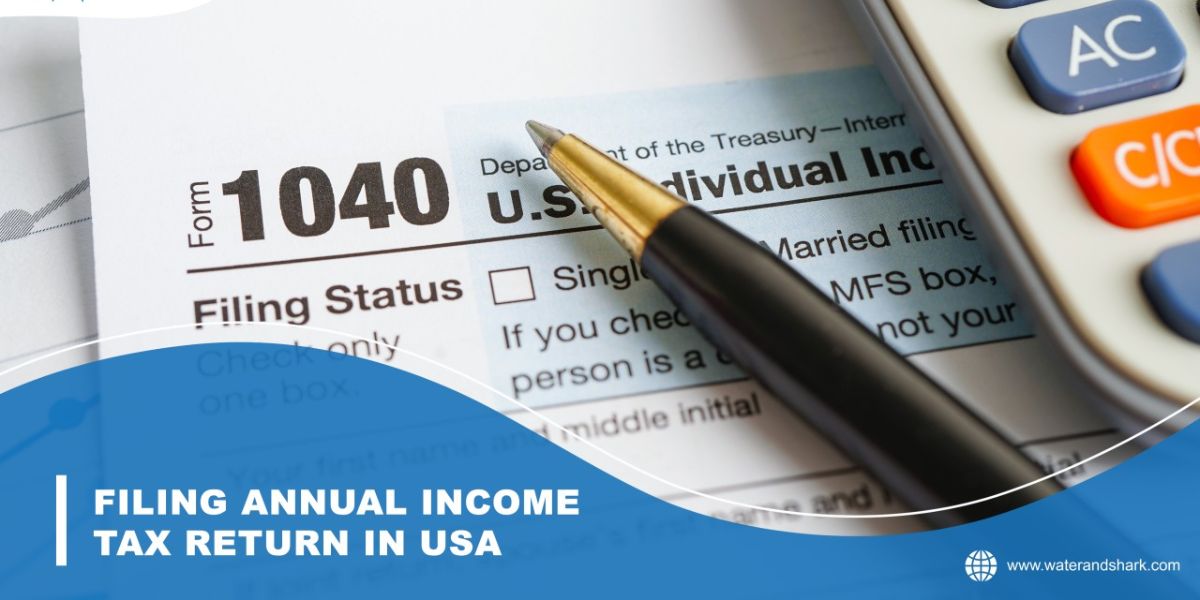What is Form 1040, and why does everyone dread it?
Form 1040 is the bedrock of the American tax filing system – and also the unofficial trigger for nationwide eye twitching every spring. But once you understand it, it’s just a glorified summary sheet of your financial year.
Let’s start at the beginning. The IRS introduced Form 1040 in 1913, the same year the modern income tax system was born. Back then, it was a one-page form with only a few lines.
Fast forward a century and change, and it has evolved into a central hub that connects your income, deductions, tax payments, and credits.
The form’s reputation for being complicated isn’t completely unfair – but it’s manageable when broken down. And honestly? It’s less about complexity and more about volume. It’s just one page… until it’s ten.
At its core, Form 1040 is how individuals report income to the IRS, calculate their tax liability, and determine if they owe more or are getting a refund. Pretty straightforward in concept – but tax law has a way of making even the simplest things “interesting.”
“The only difference between death and taxes is that death doesn’t get worse every time Congress meets.” – Will Rogers
And yet, every year, millions fill it out (or hire someone who can do it without panic-sweating).
Whether you’re self-employed, earning wages, investing, renting out property, or just lucky enough to have income – Form 1040 is where it all lands.
Who needs to file Form 1040?
If you’re a US citizen or resident alien
Here’s the short version: if you’re a US citizen or resident alien, you probably need to file Form 1040. It doesn’t matter if you live in Seattle or Singapore – the IRS wants to hear from you.
That includes:
- Employees earning wages (W-2),
- Freelancers and gig workers (1099),
- Investors earning dividends or capital gains,
- Landlords collecting rental income,
- And yes, even that random crypto trader who thought “holding” meant you didn’t have to pay taxes.
If you had income, you may need to file – and even if you didn’t owe tax, filing may be required or beneficial (think: refunds, credits, and Social Security benefits tracking).
US citizens abroad
If you’re a US citizen living abroad and thought distance meant freedom from tax forms – think again.
The US taxes its citizens on worldwide income, no matter where they live. So if you spent the year working remotely in Paris, Bali, or New Zealand – congratulations on the lifestyle – but you still need to file Form 1040.
The good news? You may qualify for special tax breaks like:
- Foreign Earned Income Exclusion (FEIE) – excludes up to $120,000+ of foreign-earned income.
- Foreign Tax Credit – a dollar-for-dollar credit for foreign taxes paid.
- Form 2555 – used to claim the FEIE and housing exclusions.
NB! Expat taxes can be tricky, but skipping the 1040 isn’t an option.
Income thresholds and age considerations
Not everyone is required to file every year. The IRS sets minimum income thresholds that determine whether a return is necessary – and those vary depending on your age and filing status.
Here’s a simplified breakdown for 2025 (filing 2024 taxes):
| Filing Status | Age | Minimum Gross Income Required to File |
|---|---|---|
| Single | Under 65 | $14,600 |
| Single | 65+ | $16,850 |
| Married Filing Jointly | Both under 65 | $29,200 |
| Married Filing Jointly | One 65+ | $30,650 |
| Married Filing Jointly | Both 65+ | $32,100 |
| Head of Household | Under 65 | $21,900 |
| Head of Household | 65+ | $23,150 |
NOTE! Self-employed individuals must file if they earned $400 or more in net income – no matter their age or status.
Anatomy of Form 1040 – what’s in the box?
Think of Form 1040 as your financial selfie for the year.
It captures your income, deductions, tax payments, and the final verdict: refund or balance due.
Here’s a high-level breakdown:
Personal info
Right up top, you’ll enter your:
- Filing status (Single, Married Filing Jointly, etc.),
- Name, address, and Social Security Number (SSN),
- Details on any dependents.
Yes, the IRS needs to know who you are before judging your income.
Income section
This is the juicy part – your W-2s, 1099s, business income, rental income, dividends, and capital gains all land here.
If money came your way, the IRS wants it on the form.
Pro Tip: Don’t think you’re slipping past them – they’ve likely received copies of your W-2s and 1099s already.
Adjustments, deductions & credits
Once your income is tallied, you can reduce it using:
- Adjustments like student loan interest or HSA contributions,
- The standard deduction (currently $15,000 for singles) or itemized deductions (if you have a mortgage, large medical bills, etc.),
- Tax credits like:
“Credits are gold – they reduce your tax, not just your income.” – Reid Kopald EA, Tax Manager
Tax, payments & refund (or, let’s hope not, balance due)
Last section: the math showdown. It compares your tax liability to your withholding and payments.
- If you’ve paid more than you owe: Refund time
- If not: You owe
You’ll also decide how to file:
- E-file for speed and fewer errors,
- Paper mail if you’re feeling nostalgic (or live in a place with no internet). 😉
PDF guide by TFX EAs –
“How to read your US return”See the guide
Form 1040 vs the others – a quick comparison
Form 1040 is the workhorse of the IRS – but it’s not the only player in town.
Depending on your age, residency, or the need to fix a mistake, there are a few variations you might encounter.
Here’s a quick cheat sheet:
| Form | Purpose | Who uses it | Key Feature |
|---|---|---|---|
| 1040 | Standard individual income tax return | Everyone | Supports all income types |
| 1040-SR | For seniors (65+) | Retirees | Larger font, simplified layout |
| 1040-NR | For non-resident aliens | Foreigners with US income | No standard deduction |
| 1040-X | Amended tax return | Anyone fixing a filed return | Must be mailed in (yes, paper!) |
Most taxpayers will file the regular Form 1040, but it’s good to know what else exists – especially if you’re filing for a parent, amending a mistake, or are a non-resident with US income.
Attachments, schedules & supporting cast
If Form 1040 is the main character, then schedules are the supporting cast that carry the story forward.
You might not need all of them – but you’ll likely need a few.
Commonly needed schedules
1. Schedule A – Itemized Deductions
Use this if your deductible expenses (like mortgage interest, state/local taxes, medical bills, and charitable donations) exceed the standard deduction.
Otherwise? Skip it – the standard deduction is often simpler and better.
Also read – Schedule A demystified: A guide to itemized deductions
2. Schedule B – Interest and Ordinary Dividends
If you earned more than $1,500 in interest or dividends – from bank accounts, brokerage accounts, or that one stock your cousin told you to buy – you’ll report it here.
Also read – IRS Form 1040 Schedule B: Understanding interest and ordinary dividends
3. Schedule C – Profit or Loss from Business
Freelancers, gig workers, Etsy shop owners, and side hustlers – this one’s yours.
Report business income and deductible expenses to calculate your net profit (or loss).
Also read – How to file taxes as an independent contractor (Schedule C)
4. Schedule D – Capital Gains and Losses
Sold stocks, crypto, real estate, or that NFT you regret buying? Capital gains (or losses) go here.
Pro Tip: Losses can offset gains – and even reduce your taxable income.
And the rest of the crew…
1. Schedule 1 – Additional Income and Adjustments to Income
Got alimony, gambling winnings, or unemployment income? That’s “additional income.” Want to deduct student loan interest or HSA contributions? That’s an “adjustment.” Both happen here.
2. Schedule 2 – Additional Taxes
Owe self-employment tax, household employment taxes, or the dreaded alternative minimum tax (AMT)? You’ll find them on Schedule 2 – aka, the “bad news” schedule.
3. Schedule 3 – Additional Credits and Payments
Claiming credits like the Foreign Tax Credit, education credits, or net premium tax credit? This is where the IRS gives you money – the fun side of tax forms.
4. Schedule E – Supplemental Income and Loss
Rental income, royalties, partnerships, S corps, estates, and trusts. If your income doesn’t fit in a neat box, it probably belongs here.
5. Schedule F – Profit or Loss from Farming
Yes, the IRS still cares about cows, corn, and tractors. Farmers and ranchers report their agricultural income and expenses here.
6. Schedule H – Household Employment Taxes
Hired a nanny, housekeeper, or personal assistant? You may need to pay employment taxes – and Schedule H keeps you honest.
7. Schedule J – Income Averaging for Farmers and Fishermen
Had a bumper crop (or catch)? Schedule J helps spread that income over multiple years to smooth out the tax hit – but only for qualifying farmers and fishers.
8. Schedule R – Credit for the Elderly or the Disabled
If you’re 65+ or permanently disabled and meet income requirements, this schedule could qualify you for a modest tax credit.
9. Schedule SE – Self-Employment Tax
Earned $400 or more from freelance, contract, or side gig work? Congrats – you’re self-employed (according to the IRS). Time to pay Social Security and Medicare tax here.
10. Schedule 8812 – Additional Child Tax Credit
If your Child Tax Credit is more than your total tax, Schedule 8812 helps you claim the refundable portion – which means you get the difference as a cash refund.
Filing deadlines, extensions & tips
Standard deadlines
- April 15: The main event. If it falls on a weekend or holiday, the deadline moves to the next business day.
- June 15: Expats get an automatic 2-month extension – no request needed (but interest still accrues if you owe tax).
How to request more time (Form 4868)
Need more time to get your stuff together? File Form 4868 for a 6-month extension – moving the deadline to October 15.
NOTE! This extends your time to file, not your time to pay. If you owe taxes, pay an estimate by April 15 to avoid penalties and interest.
Also read – How to file a tax extension: What to know if you need more time
Payment options
The IRS makes it easy-ish to pay:
- IRS Direct Pay – Straight from your bank account, no fees.
- Debit/credit card – Comes with processing fees (and a frown).
- EFTPS – The government’s own payment system.
- Paper check – For those living in 1987. 😉
Pro Tip: Paying taxes with a credit card? Unless you’re chasing points and pay it off in full, it’s a very expensive short-term loan.
For expats – extra considerations
Living abroad? The rules change – slightly.
But don’t be fooled: Form 1040 is still mandatory for US citizens and green card holders, no matter where they live or earn.
Here’s what expats should keep in mind:
- FBAR (FinCEN 114) – Required if you had over $10,000 in foreign bank accounts at any time during the year.
- FATCA (Form 8938) – Similar to FBAR but includes more types of assets and higher thresholds.
- Foreign tax breaks:
- FEIE (Form 2555) – Excludes a large chunk of foreign earned income.
- Foreign Tax Credit (Form 1116) – Helps avoid double taxation.
Bonus Tip! Expats also qualify for the June 15 extension automatically.
Pro tips for a painless 1040 experience
Let’s be honest – tax prep can be painful.
But with the right moves, you can make it pretty painless.
Organize your docs early
Here’s a basic checklist:
- W-2 from employers
- 1099s (NEC, DIV, INT, B, etc.)
- K-1s from partnerships or trusts
- Foreign income records
- Receipts for deductions or expenses
Extra Tip: Don’t wait for April 14. If you do, your coffee will go cold before your stress does.
Double-check for tax credits you might miss
Many taxpayers leave money on the table by skipping credits they qualify for.
A few to watch for:
- Child Tax Credit (even partially refundable)
- Saver’s Credit (for low-to-moderate income retirement contributions)
- Education Credits (like the American Opportunity Credit)
- Foreign Tax Credit (for expats or investors with foreign income)
Even if your return is simple, credits can reduce your bill or boost your refund. It’s worth a second look.
File electronically and set up direct deposit
- E-file is faster and cleaner.
- Direct deposit gets your refund to you faster.
- Avoid the mail unless you’re nostalgic for envelopes and stamps.
Final thoughts – it’s just a form (and we’ve seen worse)
Form 1040 looks intimidating at first – but once you understand the pieces, it’s just a yearly summary of your financial life.
Once you’ve got this down, you’re 80% of the way to mastering your US tax obligations.




